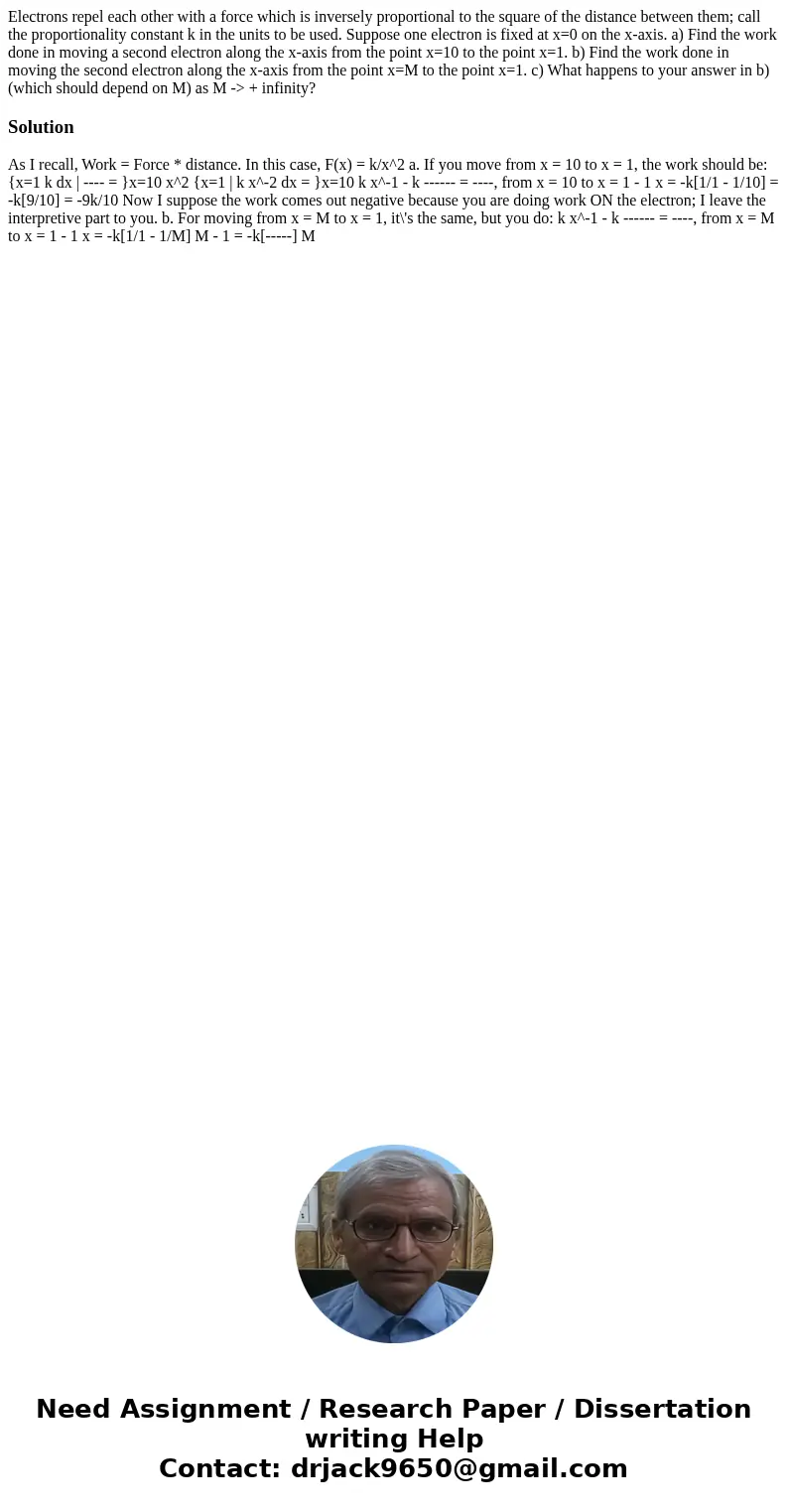Electrons repel each other with a force which is inversely p
Electrons repel each other with a force which is inversely proportional to the square of the distance between them; call the proportionality constant k in the units to be used. Suppose one electron is fixed at x=0 on the x-axis. a) Find the work done in moving a second electron along the x-axis from the point x=10 to the point x=1. b) Find the work done in moving the second electron along the x-axis from the point x=M to the point x=1. c) What happens to your answer in b) (which should depend on M) as M -> + infinity?
Solution
As I recall, Work = Force * distance. In this case, F(x) = k/x^2 a. If you move from x = 10 to x = 1, the work should be: {x=1 k dx | ---- = }x=10 x^2 {x=1 | k x^-2 dx = }x=10 k x^-1 - k ------ = ----, from x = 10 to x = 1 - 1 x = -k[1/1 - 1/10] = -k[9/10] = -9k/10 Now I suppose the work comes out negative because you are doing work ON the electron; I leave the interpretive part to you. b. For moving from x = M to x = 1, it\'s the same, but you do: k x^-1 - k ------ = ----, from x = M to x = 1 - 1 x = -k[1/1 - 1/M] M - 1 = -k[-----] M
 Homework Sourse
Homework Sourse